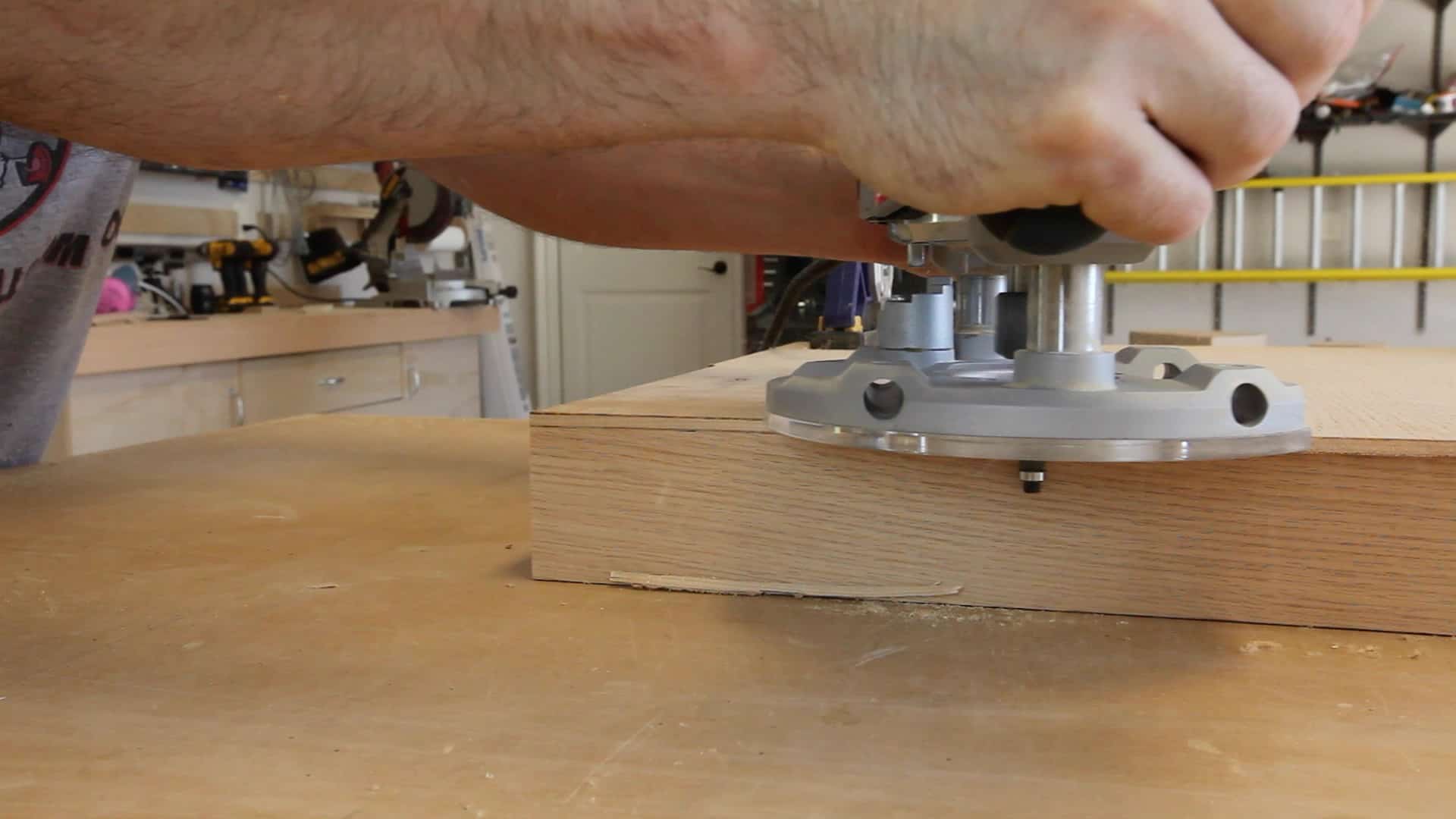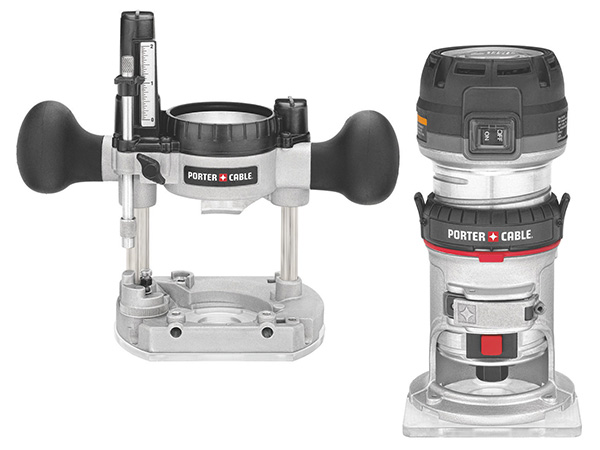Woodworking routers can be incredibly useful tools for creating intricate and detailed designs. But let’s address the burning question: are woodworking routers dangerous? Well, hold on to your safety goggles, because in this article, we’ll dive into the world of woodworking routers and explore their potential risks. So, if you’re curious about the safety aspects of these powerful machines, you’ve come to the right place!
Woodworking routers are like the superheroes of the workshop. They have the power to shape and carve wood with precision and finesse. But just like any superhero, they come with their own set of risks. In this informative piece, we’ll uncover the potential dangers of using woodworking routers and share some essential safety tips to keep you out of harm’s way. So, whether you’re new to woodworking or a seasoned pro, read on to learn how to handle these powerful tools with caution and confidence.
Woodworking routers may seem intimidating at first, but with the proper precautions, you can unleash their potential without putting yourself at risk. In this guide, we’ll explore the specific hazards associated with woodworking routers and provide practical advice to ensure your safety. Discover how to protect yourself, avoid common pitfalls, and gain the knowledge needed to turn your woodworking projects into a masterpiece. So, let’s jump right in and demystify the world of woodworking router safety!

Are Woodworking Routers Dangerous?
Woodworking routers are powerful tools that are commonly used in carpentry and woodworking projects. While they are incredibly useful and versatile, there is a question that often comes to mind – are woodworking routers dangerous? In this article, we will explore the safety aspects of using woodworking routers and provide some helpful tips to ensure safe usage.
The Basics of Woodworking Routers
Woodworking routers are handheld power tools used for hollowing out an area in a piece of wood or creating decorative cuts. They consist of a motor that spins a cutting bit at high speeds, allowing users to shape wood according to their desired design. Routers can be used for various tasks, such as creating grooves, chamfers, dovetails, and even intricate patterns.
However, it’s important to note that woodworking routers can be dangerous if not used properly. The high rotational speed of the bit combined with the sharp cutting edges can lead to accidents and injuries if safety precautions are not followed. It’s crucial to understand the potential risks involved and take the necessary steps to ensure safe operation.
Safety Measures for Woodworking Routers
When working with woodworking routers, following safety guidelines is essential. Here are some important measures to keep in mind:
- Wear protective gear: Always wear safety glasses or goggles to protect your eyes from flying debris. Additionally, consider wearing ear protection and a dust mask to protect yourself from noise and wood particles.
- Secure the workpiece: Use clamps or other secure methods to hold the workpiece in place. This ensures stability and reduces the chance of accidents caused by unexpected movement.
- Start with a test piece: Before working on your final project, it’s a good practice to test your router settings and techniques on a scrap piece of wood. This allows you to make any necessary adjustments without risking damage to your actual workpiece.
- Inspect the router and bit: Regularly check the router and bit for any signs of wear or damage. Replace dull or damaged bits immediately, as they can increase the risk of accidents.
- Use the right speed and depth: Adjust the speed and depth of the router according to the type of wood and the desired cutting depth. Using excessive force or incorrect settings can lead to kickback or other dangerous situations.
- Maintain a safe distance: Keep your hands and body at a safe distance from the spinning bit. Use push blocks or other accessories to guide the workpiece and prevent accidental contact with the bit.
- Unplug when not in use: Always unplug the router when not in use or when making adjustments to the bit. This prevents accidental activation and reduces the risk of injuries.
Benefits of Using Woodworking Routers
Despite the potential risks involved, woodworking routers offer several benefits that make them valuable tools in the hands of skilled craftsmen. Here are some advantages of using woodworking routers:
- Versatility: Woodworking routers can be used for a wide range of tasks, from simple shaping to complex joinery. They are suitable for both large-scale projects and intricate details.
- Precision: Routers allow for precise cutting and shaping, making them ideal for creating intricate designs and achieving high-quality finishes on wood surfaces.
- Efficiency: With the right techniques and router bits, tasks that would otherwise be time-consuming can be completed quickly and efficiently.
- Creativity: Woodworking routers provide the freedom to explore creativity and bring unique designs to life. They allow craftsmen to experiment with different profiles and patterns.
- Professional results: Using a router can elevate the overall quality of woodworking projects, giving them a polished and professional look.
Conclusion
Woodworking routers can be powerful and versatile tools when used correctly and safely. Understanding the potential risks and following proper safety measures is crucial to prevent accidents and injuries. By wearing protective gear, securing the workpiece, and practicing safe techniques, you can enjoy the benefits of woodworking routers while minimizing the risks. Remember, safety should always be a top priority when working with any power tool.
## Key Takeaways: Are Woodworking Routers Dangerous?
1. Woodworking routers can be dangerous if not used properly.
2. Always wear safety gear like goggles, gloves, and ear protection.
3. Keep the router’s guard on and use a push stick for added safety.
4. Learn proper technique and practice on scrap wood before starting a project.
5. Never rush or make sudden movements while operating a router.
Frequently Asked Questions
Woodworking routers are powerful tools that can be both useful and dangerous if not handled properly. Here are five common questions about woodworking routers and their potential risks.
1. What safety precautions should I take when using a woodworking router?
When operating a woodworking router, it’s important to prioritize safety. Start by wearing protective gear such as safety goggles, ear muffs or plugs, and a dust mask. Always ensure that the router is securely mounted on a stable surface before use. Keep your hands away from the cutting area, and use clamps or a router table to secure the workpiece. Additionally, it’s crucial to familiarize yourself with the router’s manual and follow all guidelines provided by the manufacturer.
By implementing these safety precautions, you can minimize the risk of accidents and injuries while using a woodworking router.
2. Can a woodworking router cause kickback?
Yes, kickback is a potential risk when using a woodworking router. Kickback occurs when the spinning router bit catches the workpiece and forcefully throws it back, potentially causing the user to lose control of the tool. To prevent kickback, it’s essential to push the router against the rotation of the bit, keeping a firm grip on the handles. Using appropriate featherboards or hold-downs can also help prevent the workpiece from being lifted or shifted by the force of the router bit.
By being aware of the risks and taking proactive measures, such as using proper technique and securing the workpiece, you can greatly reduce the likelihood of kickback incidents.
3. Are woodworking routers noisy?
Woodworking routers can be quite noisy during operation, especially if used without hearing protection. The high-speed rotation of the router bit, combined with the vibration of the machine, can generate significant noise levels. To protect your hearing, it is recommended to wear ear muffs or earplugs while using a woodworking router. These accessories will help reduce noise exposure and protect against potential hearing damage over time.
By wearing appropriate hearing protection, you can enjoy woodworking with a router while safeguarding your hearing health.
4. Can a beginner use a woodworking router?
Of course! While woodworking routers may seem intimidating to beginners, they can be used safely with the right guidance and practice. Start by familiarizing yourself with the router’s controls and functions by reading the manual thoroughly. It’s also helpful to seek guidance from experienced woodworkers or take a beginner’s woodworking class to learn proper usage and techniques.
Remember to start with simple projects and practice on scrap or test pieces before working on more advanced woodworking tasks. With patience and practice, even beginners can become proficient in using woodworking routers.
5. What are some common router-related injuries and how can they be prevented?
Some common router-related injuries include cuts, burns, and accidental contact with the spinning bit. To prevent these injuries, it’s crucial to use push sticks or router tables whenever possible to keep your hands a safe distance from the cutting area. Always use sharp router bits and avoid forcing the tool through the wood, as this can lead to kickback or overheating. Additionally, maintaining a clean and well-lit workspace can help prevent accidents by providing better visibility and reducing distractions.
By practicing caution, using proper safety techniques, and staying focused on the task at hand, you can significantly reduce the risk of router-related injuries.

What is the Scariest Tool In the Shop? This Woodworking Mistake Almost Injured Me!
Summary
Woodworking routers can be dangerous if not used properly, but with the right precautions, accidents can be prevented. Always wear safety gear like goggles, gloves, and ear protection. Keep your fingers away from the bit, and never remove the router from the workpiece while it’s still running.
Remember to secure your workpiece properly, and start with a slower speed before gradually increasing it. It’s important to practice good technique and be aware of your surroundings. By following these safety guidelines, you can enjoy woodworking with a router while staying safe.
